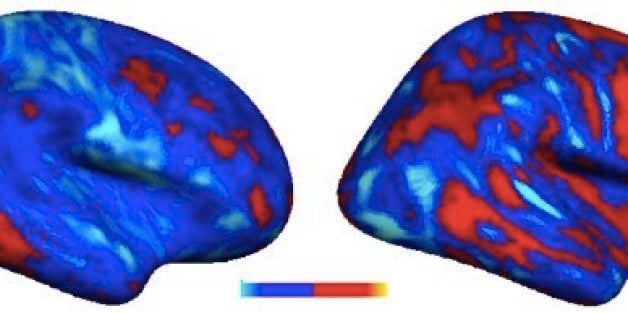
Even with mounting scientific research and hundreds of clinical studies, the autistic brain remains something of a mystery.
Some research has suggested that there is too much connectivity in the brains of individuals with Autism Spectrum Disorder (ASD), while other studies have pointed to lack of synchronization in parts of the brain that usually work together.
It turns out, both of these conclusions may be correct. New research from neuroscientists at Carnegie Mellon University suggests that both over and under-connectivity may reflect an underlying principle of brain organization at work: Idiosyncrasy.
The researchers used fMRI technology to study the brains of individuals with ASD while they were at rest. By analyzing the brain in a resting state, they were able to see patterns emerging spontaneously. What they found was that the brains of ASD participants showed unique patterns of synchronization.
In a cross-comparison of the brain scans of those with ASD and a control group, the researchers noted some striking differences. The brains of the control volunteers all showed similar connectivity patterns. Among the volunteers with ASD, however, connectivity patterns were very individual and unique to different brains. The researchers described the non-ASD brains as "conformist" compared to the ASD group, which they referred to as "idiosyncratic."
According to one of the study's authors, Dr. Marlene Behrmann, a cognitive neuroscientist at Carnegie Mellon, the researchers hope to use the findings to classify subgroups of autism.
"Identifying brain profiles that differ from the pattern observed in typically developing individuals is crucial not only in that it allows researchers to begin to understand the differences that arise in ASD but, in this case, it opens up the possibility that there are many altered brain profiles all of which fall under the umbrella of 'autism' or 'autisms,'" Behrmann said in a statement.
Avital Hahamy, also a study author, explained that the changes the researchers witnessed between the ASD and non-ASD brain might be the result of differences in the way that these groups interact with their environments.
"From a young age, the average, typical person's brain networks get molded by intensive interaction with people and the mutual environmental factors," Hahamy said in the statement. "Such shared experiences could tend to make the synchronization patterns in the control group's resting brains more similar to each other. It is possible that in ASD, as interactions with the environment are disrupted, each one develops a more uniquely individualistic brain organization pattern."
Hopefully, these findings could impact future methods of diagnosing the disorder and treatment options.
"There are hundreds of researchers trying to find robust and reliable ways to diagnose autism... I think it is too early to say whether these idiosyncratic patterns of connectivity might help with the diagnosis," Behrmann told the Huffington Post. "What is critical for now is to identify a clear way in which the brain dynamics differ among typically developing and ASD individuals. Doing so will help facilitate progress in diagnosis and treatment and the incremental progress of science is all moving in a positive direction."
The findings were published in the journal Nature Neuroscience.
